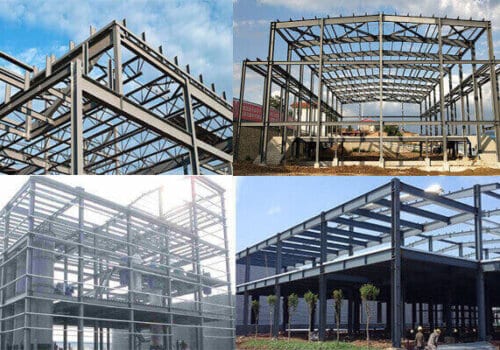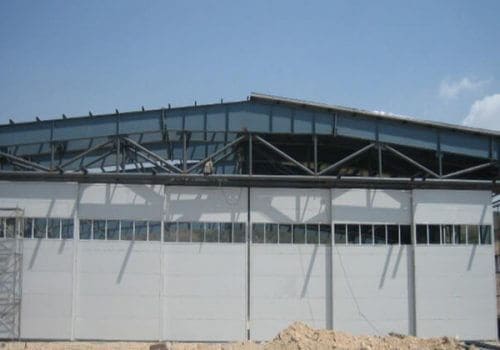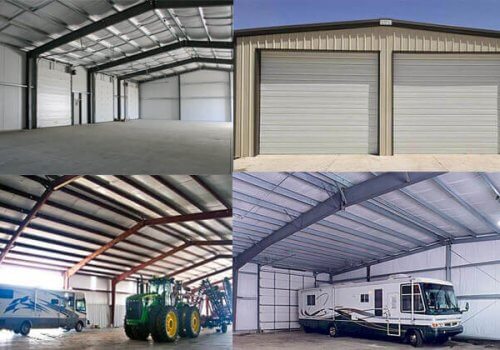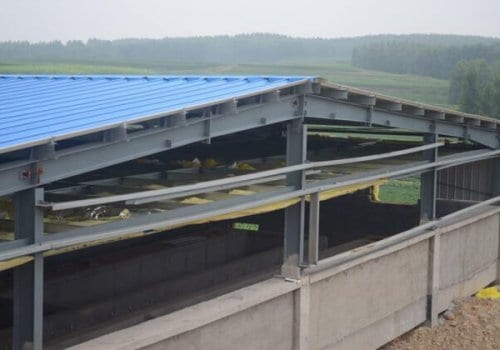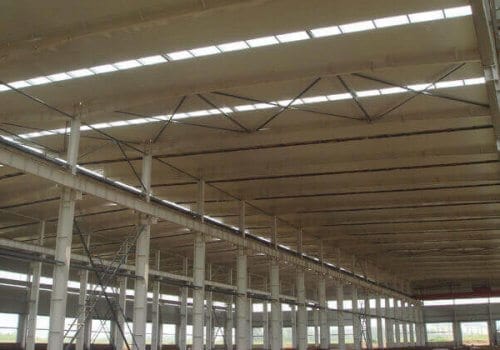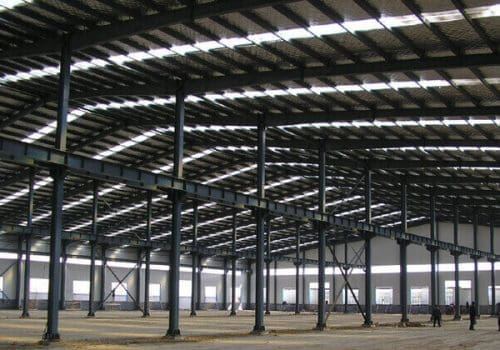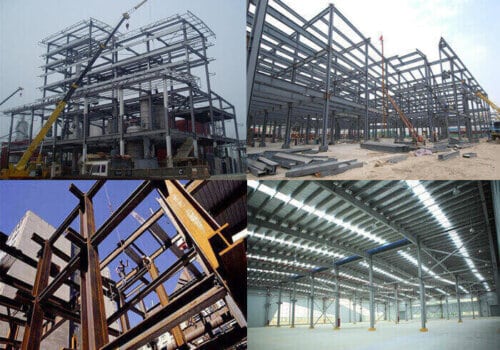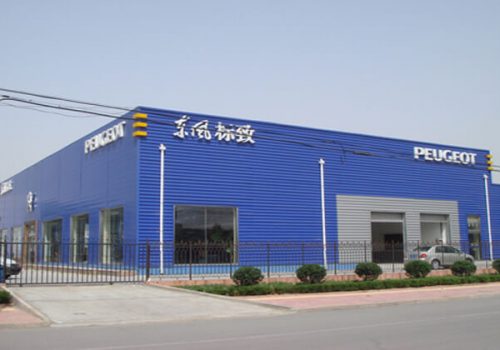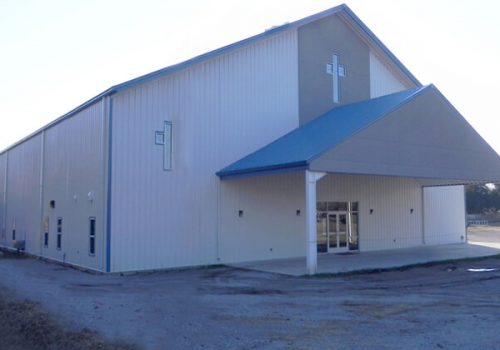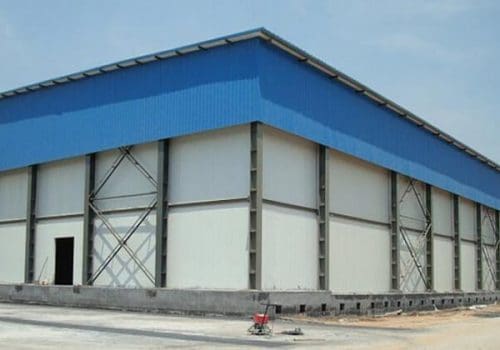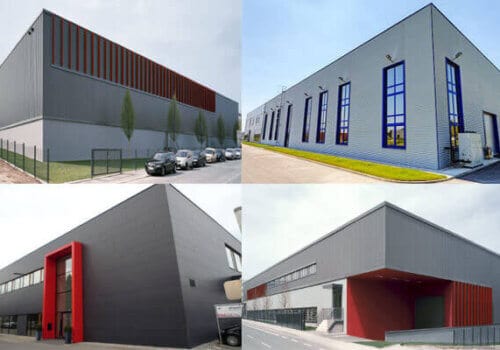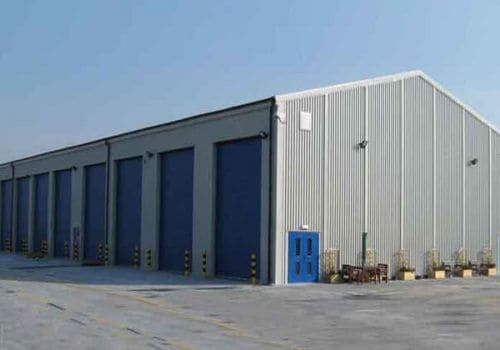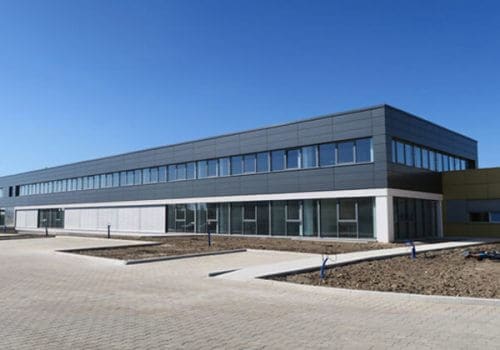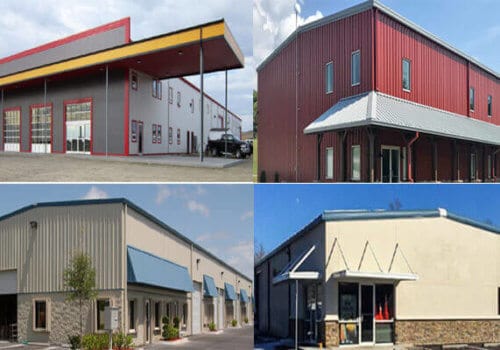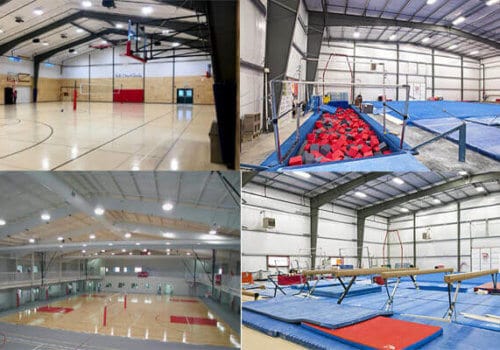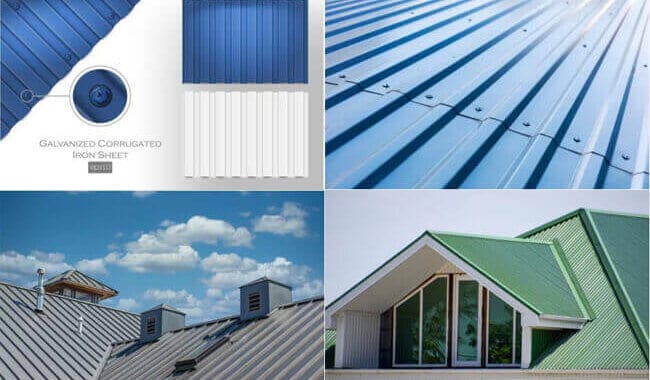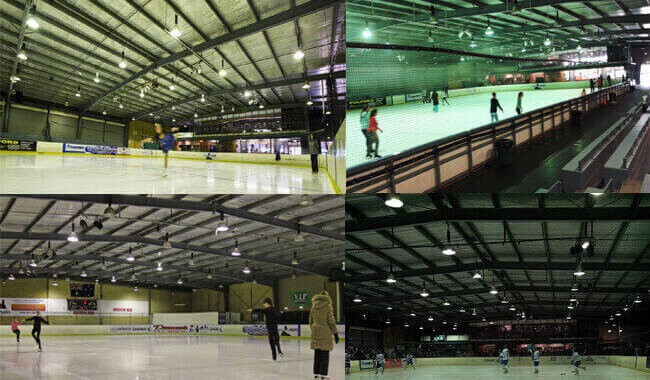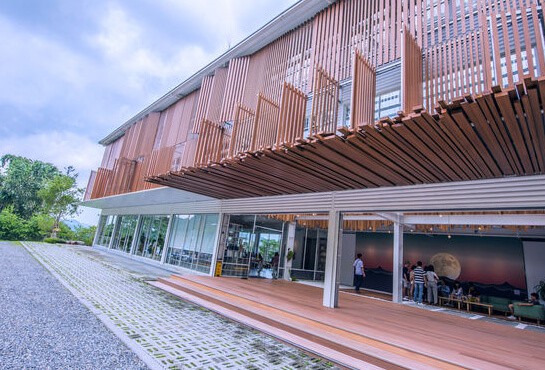The service life of steel structure buildings is more than 50 years. The roof and wall panels of prefabricated steel…
The rise of metal structure barn buildings is closely related to the development of modern agriculture. With the expansion of agricultural production, traditional wood or concrete structures can no longer meet the needs of large-scale agricultural product storage. Metal structure buildings can provide more extensive and higher storage space, the construction speed is fast, and the construction cost is low. It meets the needs of farmers for modern agricultural storage and becomes an ideal choice.
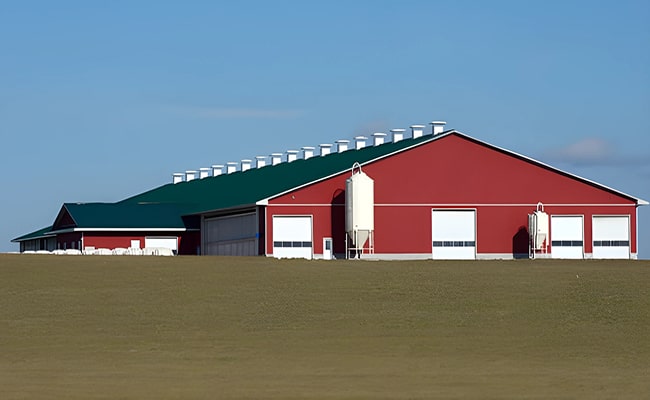
Introduction to Metal Structure Barn Buildings
Metal structure barn buildings are storage facilities with steel as the primary load-bearing structure. They are widely used in the agricultural field to store grain, agricultural products, agricultural machinery and other materials. Compared with traditional building materials, metal structure barns have the characteristics of high strength and durability.
Metal barns use prefabricated metal parts assembled on-site. They are fast to construct and highly adaptable. They can cope with extreme weather (such as strong winds, blizzards, etc.) and meet large-scale storage needs.
Advantages of Metal Structure Barns
Durability and Strength:
Steel is robust and durable and can withstand the pressure of loads and external environments, including strong winds, snow, earthquakes, and other natural disasters. This makes metal barns stable under harsh climatic conditions.
Cost-effectiveness
Although the material cost of metal structures is higher than that of traditional wood structures, in the long run, metal structures are more economical due to their durability and low maintenance costs. Metal barns are corrosion-resistant, making them low-maintenance. They reduce the frequency of repairs and replacements compared to wood or masonry structures, thereby reducing overall costs.
Flexible design and scalability
Metal barns are designed with flexibility and can be customized in size and shape according to various storage needs. In addition, metal structures can be easily expanded and modified, saving later construction and demolition costs.
Fast construction
Metal barns use prefabricated components and are built faster than traditional structures. Prefabricated parts can be manufactured in advance, and the on-site installation time is short, especially for agricultural projects that need to be used quickly.
Environmental protection
Metal is a recyclable material. Metal barns can be recycled and reused after their service life, reducing waste generation and conforming to the current environmental protection trend.
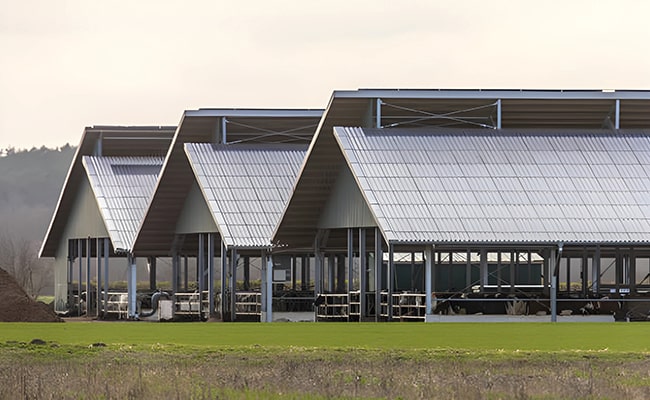
Structure type of metal structure barn buildings
Open structure
The open metal structure barn building is the most economical and practical type. It is characterized by no walls around it, only a roof and railings or wire mesh to enclose the surrounding area. This structure is more convenient for air circulation, and good ventilation conditions reduce internal moisture and odor, providing a more comfortable environment for livestock. In addition, the open structure does not require the design of wall purlins, and the cost is correspondingly reduced, which is a more economical solution.
This structure suits tropical or subtropical areas with warm climates and less precipitation. In these areas, the external environment has little impact on the building, and there is no need to provide additional protection for livestock and agricultural products. This structure is not suitable for cold areas.
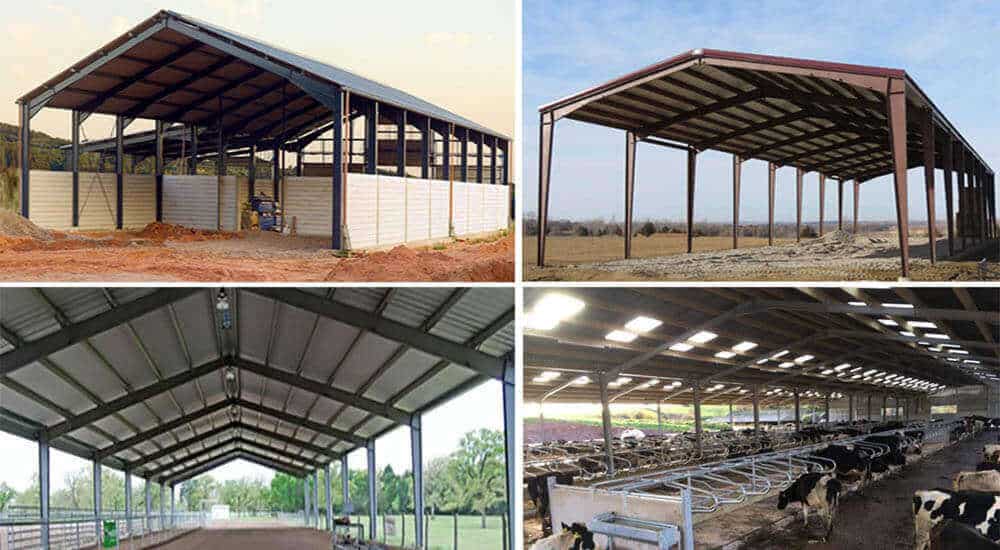
Closed structure
The closed metal barn uses corrugated color steel sheets, brick walls, sandwich panels, or other enclosure materials to protect the internal space from wind and rain. Closed structures usually store livestock feed (such as hay or grain) or granaries to protect stored items from moisture, pests, and bad weather.
Closed structures are more expensive than open materials, but their advantage is that they can effectively withstand severe weather, such as strong winds and snowfall. Especially in cold or rainy areas, closed structures can keep the interior dry and warm and avoid damage to stored items due to moisture.
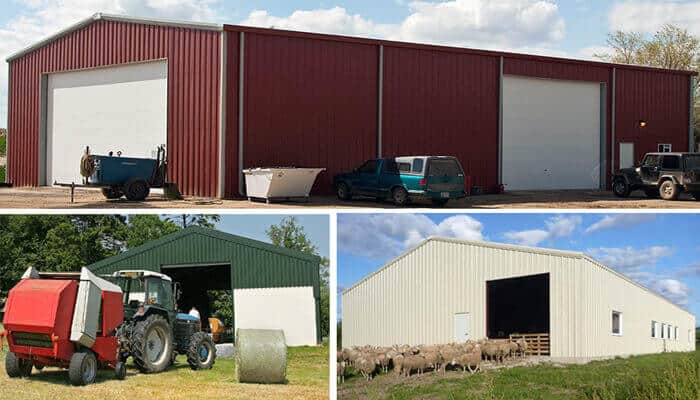
Metal Structure barn design
Metal structure barns are not only storage spaces but can also be optimized and designed according to needs to meet different usage requirements. The following are several important aspects of metal barn design.
1. Functional design: storage, livestock, equipment, etc.
Metal barns can be customized according to usage requirements. Common uses include:
Grain and feed storage: Design a well-sealed storage space to prevent moisture, mildew, and pests, and reserve a ventilation system to ensure air circulation and keep stored items dry.
Livestock breeding: Depending on the needs of different livestock, open or semi-enclosed areas can be set up, and they can be equipped with ventilation systems, drinking water systems, and sewage facilities to ensure animal health.
Agricultural equipment storage: Metal barns can store large mechanical equipment such as tractors and harvesters. Design entrances, exits, and parking areas to improve equipment management convenience.
2. Maximize space: Layout and floor plan creativity.
A reasonable layout can maximize space utilization and improve operational efficiency.
Zoning design: Design different functional zones (such as storage areas, work areas, livestock areas, etc.) to ensure that materials, equipment parking, and livestock activities do not interfere with each other, thereby improving overall operational efficiency.
Vertical space utilization: An elevated shelf system can double the storage capacity of storage barns while reducing the floor space and improving space utilization.
Spacious entrance and exit design: According to the purpose, design the appropriate door height and width so that large equipment such as tractors and trucks can enter and exit smoothly, improving operational convenience.
3. Add a personal touch: The aesthetics and style of metal barn design
A metal barn is not just a functional building; its exterior design can also be full of personality.
Color and material selection: You can choose color-coated steel plates or combine them with materials such as wood and glass to improve the visual beauty and make it more harmoniously integrated into the surrounding environment.
Roof shape: In addition to the common pitched roof, you can also choose arched or curved roofs, etc., to enhance the building’s uniqueness and wind resistance.
Door and window design: Large glass windows or skylights can introduce natural light, reduce daytime lighting needs, and increase the building’s modern sense.
Conclusion
Metal structure barns have the advantages of durability, economy, and fast construction and are ideal for modern agriculture. With their low maintenance cost and flexible customization, whether used to store agricultural products, feed, or as a livestock shed, metal structure barns can provide safe and reliable solutions to meet long-term use needs.
